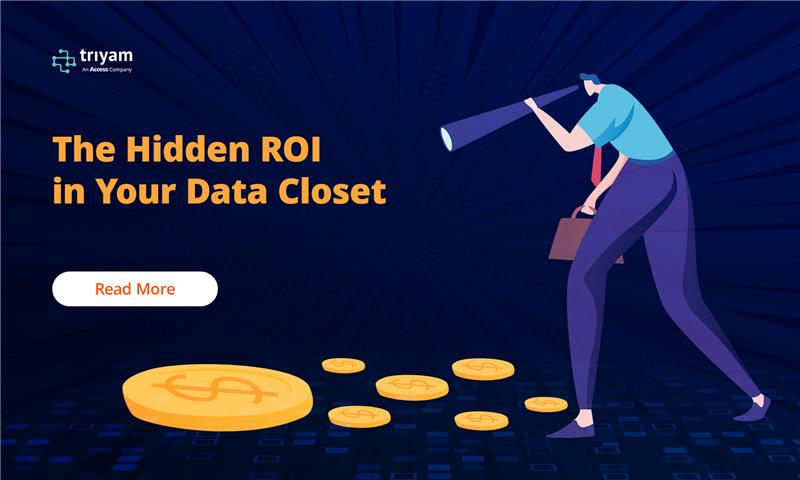In today’s data-driven environment, organizations face increasing pressure to manage vast volumes of digital information efficiently, securely, and cost-effectively. Traditional data storage methods are often ill-equipped to handle this deluge, leading to increased IT costs, regulatory risks, and inefficiencies. Enterprise Active Archiving Solutions have emerged as a strategic response to these challenges—offering a smart way to manage historical data while keeping it accessible and compliant.
This article explores the key benefits and return on investment (ROI) of adopting enterprise active archiving solutions.
What is Enterprise Active Archiving?
Active archiving is a data management approach that involves transferring older, less frequently accessed data from primary production systems to a secondary storage level—referred to as the archive—while ensuring that it remains easily searchable and retrievable. In contrast to cold storage, which is typically offline or accessed infrequently, active archives stay “live” and integrated with enterprise applications, enabling end-users to access archived data with minimal interruptions.
Key Advantages of Enterprise Active Archiving Solutions
- Cost Efficiency
Reduced Storage Expenses: Primary storage can be costly. By relocating older data to more affordable archival storage, organizations can lessen their dependence on expensive infrastructure.
Shorter Backup Durations and Costs: With less data in the primary system, backups can be completed more quickly and cost-effectively.
Lower Demand for Legacy Systems: Archiving data from outdated applications allows for the retirement of legacy systems, leading to decreased maintenance expenses and software licensing costs.
- Enhanced Performance
Accelerated Application Performance: Eliminating inactive data from production environments boosts application speed and minimizes downtime.
Streamlined Databases: Archiving enhances database efficiency by reducing table sizes and improving query performance.
- Compliance and Legal Readiness
Regulatory Adherence: Sectors such as healthcare, finance, and insurance must adhere to stringent data retention regulations (e.g., HIPAA, SEC, GDPR). Active archiving guarantees that data is securely stored and maintained for required durations.
Legal Hold & eDiscovery: Rapid and efficient access to historical data allows organizations to respond to legal inquiries and audits effortlessly.
- Strengthened Security
Data Safeguarding: Contemporary archiving solutions include built-in encryption, access controls, and audit trails to protect sensitive information.
Unalterable Storage: Archived data is safeguarded against accidental or intentional tampering, fulfilling data integrity standards.
- Business Continuity and Disaster Recovery
Archived data stored offsite or in the cloud acts as a crucial component of disaster recovery strategies.
It ensures ongoing access to vital data in the event of system failures or data loss.
Calculating ROI from Active Archiving Solutions
Direct Cost Savings
- Reduction in Storage Needs: Numerous organizations experience a decrease in primary storage usage by as much as 50–70%.
- Decommissioning Outdated Systems: The yearly savings from retiring one outdated application can vary from $50,000 to $200,000, depending on the infrastructure and licensing involved.
- Decreased Backup Infrastructure Costs: Cutting down on backup volumes leads to savings on hardware, software, and labor expenses.
Operational Efficiency
- Less IT Staff Required: IT personnel spend reduced time managing overloaded systems and addressing storage challenges.
- Quicker Data Access: Enhances user productivity across various departments.
Risk Mitigation ROI
- Preventing regulatory fines, legal expenses, and damage to reputation can greatly offset the costs associated with archiving. For instance, penalties for non-compliance with HIPAA can exceed $1.5 million for each incident.
Scalability and Long-Term Value
- Cloud-based active archiving expands alongside the business. As data volume increases, the cost per GB stored diminishes, providing long-term ROI.
- By separating data from outdated applications, organizations maintain flexibility and ensure their IT environments are future-ready.
Conclusion
For organizations grappling with data overload, active archiving provides a crucial pathway to efficiency and compliance. By intelligently relocating inactive data, businesses not only improve operational efficiency and reduce costs but also enhance legal readiness and future scalability.
The return on investment is both measurable and strategic: from IT savings and faster application performance to risk mitigation and regulatory compliance. In short, active archiving isn’t just a smart IT move—it’s a strategic business decision.
Triyam’s enterprise-grade active archiving solutions help organizations securely retire legacy systems, reduce IT costs, and maintain compliance—without losing access to critical historical data. Whether you’re in healthcare, finance, or government, our scalable and secure archive platform ensures your data remains accessible, protected, and future ready.
Discover how much you can save—partner with Triyam today.
Schedule a live demo now!

